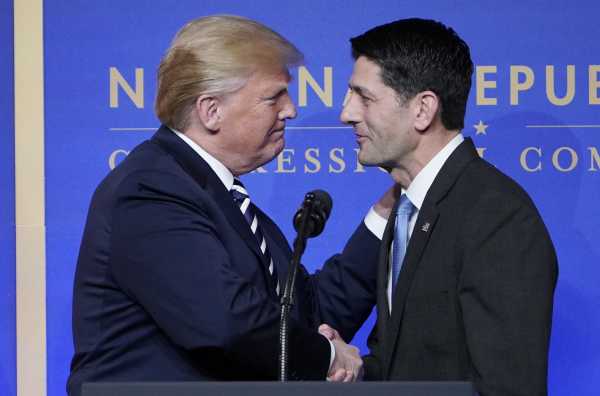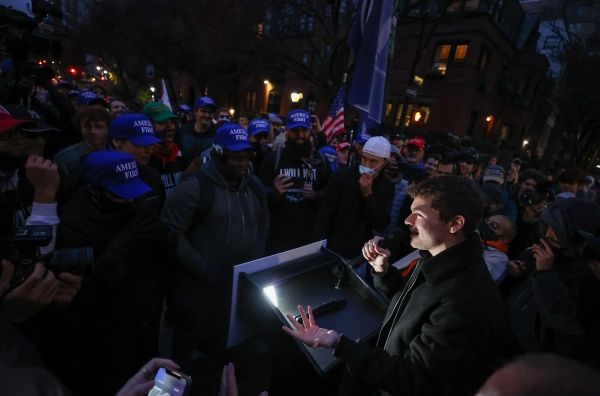
Paul Ryan once said that he dreamed about restructuring Medicaid, as it was a “drink from a barrel”. But the news that the speaker of the house will retire at the end of this year, it seems that Ryan will leave Congress without achieving his ambitions.
At least, not directly. But if you look at the actions of the administration trump is taking dramatically reduced Medicaid is the largest insurer, which covers more than 75 million Americans — it is clear that Ryan’s dreams alive and well. Through work requirements and other restrictions, presidents, Donald trump ultimately can control the most significant rollback of medicaid benefits in the 50-year program history.
And his staff are taking their cues directly from the book of Ryan.
Paul Ryan has long wanted to overhaul Medicaid, and he almost did
Back in 2010, when the Republicans were completely out of power, Paul Ryan declared itself as a conservative legislator with big ideas. He outlined his vision of America in his budget blueprints and stapled his queries, even then, was the overhaul of the medicaid program.
He proposed fundamentally restructuring the financing of the programme. The Federal government currently has an open commitment to Medicaid by paying a certain percentage of the costs (always more than half), with States to get the rest. Ryan, citing concerns about the deficit and sermons state flexibility is offered by the Federal spending cap on Medicaid, giving States a certain dollar amount (or principal amount or a single person), and the simplification of some Federal rules about who and what States should cover.
In his 2012 budget, Ryan proposed to add a requirement to work in the medicaid program, citing the welfare reform of President bill Clinton of the 1990-ies.
“The best social welfare program is one that ends with a job and a stable, independent life for the individual,” Ryan wrote. “Now is the time to implement those same reforms in other areas of social protection, especially Medicaid”.
In 2017, with full Republican control of the Federal government and Ryan in charge of the house, he got the opportunity to act on those plans. A bill to repeal obamacare, which the house passed last year would put the Federal spending cap on medicaid and introduced a mandatory job requirement. He sold the bill as “the most fundamental reform law in a generation.”
The congressional budget Office predicts that the American law On the house health care would reduce medicaid spending over 10 years, with 834 billion$, compared to current law and medicaid registration would be reduced by 14 million people.
Even with a Republican point of view, Ryan did his part. After the March hiccup, Ryan muscled the bill to repeal the health care reform Obama in the house of representatives in may. But the crusade died in the Senate, where the reduction of health care costs was one of the most controversial issues that helped doom the plan in the upper house.
Ryan still hopes of passing reform law, including work requirements, after repeal obamacare died. But then again, his colleagues in the Senate let him down, signaling his reluctance to accept such a controversial issue.
If the Democrats can take the house next year, as suggested by many observers now expect, it is likely will be years before Republicans can get another chance to revise Medicaid. In Congress, Ryan’s dreams may be dead.
But in the administration of trump, they are very much alive.
As trump leads Medicaid-gutting Ryan’s agenda
When Seema Verma, who oversees the centers for medicare and medicaid Services announced in January that the administration trump the green light, the state plans to Institute work requirements for medicaid, it can read directly from the budget of Paul Ryan.
“This policy helps people to achieve the American dream,” she told reporters. “People are leaving medicaid is a good result, because we hope it means that they are no longer needed program.”
At least five of the most conservative States, which nevertheless expanded medicaid program under obamacare — Kentucky, Indiana, Arkansas, Arizona, and new Hampshire — have asked for authority trump card to allow them to establish requirements and other restrictions for many of their recipients of Medicaid. Three of them have already been approved.
A large part of Medicaid should be safe or safer from interference by trump administration. About 50 million to 75 million program participants-children, elderly, disabled, or pregnant. These people, as a rule, are exempt from the requirements of the job, and these other restrictions such as time limits, and States must cover them under Federal law.
But that still leaves about 25 million healthy, non-elderly adults, who potentially could be subject to the requirements of work and other conditions of eligibility, according to the Kaiser family Foundation. This figure is the starting point for understanding how the administration trump could cut Medicaid rolls.
The most vulnerable groups of the population are likely to be childless adults enrolled in the medicaid expansion in obamacare, which Ryan tried to finish as part of a bill to abolish the house.
Job requirements can be the tool by which the state can partially roll back the medicaid expansion or implement a castrated version. The same can be said about the provisions of the waiver that would lock people out of coverage for medicaid not to overpay and put a time limit on how many people may be eligible for medicaid. Ryan’s home state, Wisconsin, is one of the States pursuing the requirements of medicaid and other restrictions, including drug testing for applicants of the program.
This policy is radically different, experts say Medicaid, waivers were used in the past to expand health coverage.
“We were just talking about how to cut coverage,” Joan Alker, Executive Director of the Georgetown University Center for children and families, told me earlier this year. “Under any previous administration, waivers were not used to develop ways to reduce coverage.”
Trump and officials think they’re completely abandoning dreams of spending caps, Medicaid or. Just last month, Verma was still hinting that her Agency will look for ways to implement that longstanding conservative goal.
“Medicaid is supposed to be a joint partnership. But over time, costs have steadily increased. When that happened, the Federal government has begun to control you,” she told reporters several weeks ago. “If we can get to the place where we talk reads: ‘here’s your money, here are a few results that we expect from you to achieve this goal and we have some parameters and guidelines around protections for beneficiaries, and if we can give States more flexibility, that’s what I would like to get to.”
Paul Ryan could not have said it better.
Sourse: vox.com






